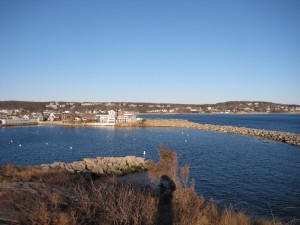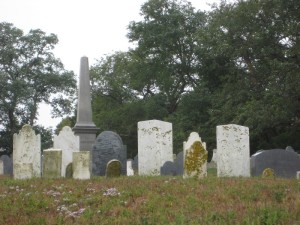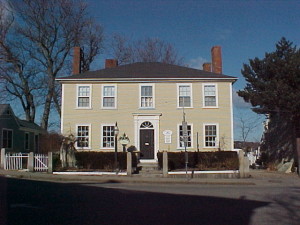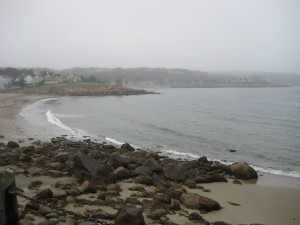Let’s Make History!
Welcome Teachers and Educators! Please feel free to use or copy any part of this Teacher’s Guide for use with students.
About The Invasion of Sandy Bay
Historical Research
Discussion Questions
Background Information on the War of 1812
Timeline for the War of 1812
Discussion Questions
Document-Based Activities
Discussion Questions
DBQ: Math From the Past
Discussion Questions
To Recreate the Past: What Does History Smell Like?
Activities Using the Five Senses
About The Invasion of Sandy Bay
- Middle-grade historical novel, noted for painstaking research and vivid recreation of the past
- Set during the War of 1812
- Based on eye-witness accounts of a British invasion of a New England town, shortly after the burning of Washington, DC
- A microcosm for understanding the War of 1812 and its effect on the American people.
Synopsis
Twelve-year old Lemuel Brooks plays Paul Revere and warns his town that “The Redcoats are coming!” when a marauding British warship targets his home town.

A view of Sandy Bay. The fort was located in the middle of the picture, where the big gray house is now. The big granite stones of the fort were later used to build the sea wall that now extends out into the harbor to break the force of the waves.
Sandy Bay is a sleepy fishing village—nothing exciting ever happens there. Until the night of September 8, 1814, when Sandy Bay becomes the site of one of strangest invasions in American history.
The captain of a British warship, observing Sandy Bay’s large granite fort, decides that the little town would be worth invading. The British attack the town from two sides. The battle is brief, fierce—and, due to the poor marksmanship of both forces, bloodless.
During the battle, the British capture nine American militiamen and the Americans capture nine of the British. To the Sandy Bay townsfolk, eager to get their friends back safe, a prisoner exchange seems obvious. But the local head of the militia, a bureaucrat named Colonel Appleton, refuses an exchange. In a shocking turn of events, the Royal Marines and the American fisherfolk join forces, as Lemuel makes the unsettling discovery that the real invaders of Sandy Bay are not who he thought they were.
How to Recreate the Past
Bitter war-time enemies—working together! As an author, this true story excited me. I knew that this long-forgotten bit of history had much to teach us today. I grew up on the rocky coast of Cape Ann, and when I became a writer, I knew I wanted to write this wonderful tale.
My problem: how to find out exactly what had happened on that long-ago foggy night, and how had people felt about it—what had they done, said, thought?
In my research, I used many resources. I went to the Old Burying Ground in Sandy Bay, and discovered who the cast of characters were by reading the birth and death dates on the tombstones. To recreate the daily life of Sandy Bay residents, I used newspapers, photographs, letters, and even cookbooks to find out how people thought, felt and talked long ago. To understand the British captain’s military strategy, I used maps and old charts of the bay. And best of all, I discovered the journal of an eyewitness—one of the Sandy Bay fishermen recounted the story in his own words.
Discussion Questions
What resources can we use to recreate the past? Consider the following resources:
- Books—who wrote it? When was it published? Did the author witness the events s/he describes?
- Internet—who posted the information? How can we verify it?
- Journals, diaries, letters—again, did the author witness the events s/he describes?
- Photographs—most photos before 1900 were carefully posed, since the technology of the time meant that candid shots would be blurry.
- Paintings, sketches, engravings
- Newspapers
- Cookbooks
- Sheet music
- Maps
- Tombstones—dates, names, epitaphs
What else?
What kind of information can we get from each of these resources?
Which resources are produced by eye-witnesses, or by people who lived in the time period you are researching?
Which are the most accurate?
Background Information on the War of 1812
The War of 1812 is a difficult war to understand. Historians argue to this day exactly why the war started in the first place. Boundary disputes and trade disagreements caused trouble between Great Britain and the United States, but what really angered New Englanders was the fact that the British sometimes captured American sailors and forced them to join the Royal Navy. Whatever the reasons, by 1812 the United States was fighting mad. The small new country went to war, for the second time, with the powerful kingdom of Great Britain: a young minnow challenging a whale.
Bitter fighting raged for two years and men died on land and sea. Fishermen couldn’t go out to fish on an ocean filled with enemy warships, and New Englanders soon began to long for peace. Pressure to end the unpopular war grew, and finally British and American diplomats met in Europe to negotiate a treaty.
They haggled for months over the terms of the peace, debating territorial boundaries, fishing rights, and trade restrictions, as the bloody war continued. And when the diplomats finally signed the treaty of Ghent that formally ended the war, the articles of the treaty were based on the principles of a return to the status quo ante bellum—in other words, the treaty returned things to the way they had been before the war began.
Timeline for the War of 1812
- 1803-1812 – British capture and “impress” approximately 10,000 Americans, forcing them to work on British ships.
- 1806 – The British blockade France; American ships traveling to France are caught in the middle. The British seize approximately 1,000 US ships.
- June 1807 – The American ship Chesapeake is fired on by the British ship Leopard after refusing to be boarded. The American public is outraged by the incident, as President Thomas Jefferson notes: “Never since theBattle of Lexington have I seen this country in such a state of exasperation.”
- December 1807 – Thomas Jefferson attempts a peaceful solution. The Embargo Act means that no American ships can sail to foreign countries. This does not affect Great Britain much, but is a disaster for American merchants. New England fishermen are especially hard hit, as the market for fish becomes nearly nonexistent.
- June 18, 1812 – President Madison persuades Congress to declare war against the British.
- August 16, 1812 – U.S. loses Fort Mackinac as the British invade American territory.
- 1812 – Three attempts are made by the U.S. to invade Canada. They all end in failure.
- August 19, 1812 – The US frigate Constitution defeats the Royal Navy ship Guerriere. During the battle cannonballs bounce off the oaken sides of the Constitution, and a crew member shouts “Her sides are made of iron!” The ship becomes known by the famous nickname “Old Ironsides.”
- April 1813 – Battle of York (Toronto). US troops take control of the Great Lakes and burn York.
- 1813 – British warships cruise up and down the New England coast, harassing towns and shipping.
- August 1813 The British ship Commodore Broke fires a single cannonball at the Town of Sandy Bay, and is driven off by the local militia.
- Fall 1814 – Sandy Bay Sea Fencibles organized. Up till now Massachusetts fishermen were exempted from militia duty since they were “mariners” and too valuable to the economy to be used as soldiers. A large fort of granite blocks is built on Bearskin Neck.
- 1814 – The British plan a 3-part invasion of US: Chesapeake Bay, Lake Champlain, and the mouth of Mississippi River. The British are eventually turned back at Baltimore harbor.
- August 24-25, 1814 – The British burn Washington, D.C. and President Madison flees the White House.
- September 8-9, 1814 – The Invasion of Sandy Bay
- September 11, 1814 – Battle of Plattsburgh (Lake Champlain). The US secures its northern border with a victory over a British force.
- September13-14, 1814 – British bombard Fort McHenry, near Baltimore. Francis Scott Key writes the Star Spangled Banner.
- December 15,1814 – The Hartford Convention. New England states are so opposed to the war that they meet to discuss seceding from the United States and becoming a separate country
- December 24, 1814 – Treaty of Ghent. British and American diplomats agree to return to the status quo: things to be the same as they were before the war. Over 2,000 American soldiers and sailors have died in the war.
- January 8, 1815 – Battle of New Orleans. US General Andrew Jackson scores a huge victory. More than two thousand British are killed or wounded, with only a few dozen American casualties. Ironically, the war is already over, but news of the peace treaty has not yet reached America.
- February 8, 1815 – News of peace first arrives in North America.
- February 22, 1815 – A joyful Peace Celebration is held in the town of Sandy Bay. Ebenezer Pool records in his journal that there is patriotic music, firing of cannons, and a “great illumination.”
- August 27, 1817 – First sighting of the Cape Ann Sea Serpent since the 1600s. An unidentified water creature of huge size is nearly netted by Sandy Bay fishermen, but escapes.
- 1835 – A lighthouse is finally erected on Straitsmouth Island in Sandy Bay.
Discussion Questions
- How was a New Englander’s daily life different because of the War of 1812? Can you think of examples in The Invasion of Sandy Bay that show how the war was changing people’s lives?
- How did people in Sandy Bay feel about the war? Did they support it? Did they agree with the politicians who voted for war?
- How did the Sandy Bay folk feel about the British when the war started? How did their feelings change?
Document-Based Activities
How can we find out what happened long ago? We can never know for certain. Even the most thorough research can never answer every question. But voices from the past can share many secrets.
Read and compare these three descriptions of the Invasion of Sandy Bay.
Marshall Swann. An excerpt from the book Little Town on Sandy Bay, copyright 1980.
The “Battle of Sandy Bay’ appears to have run pretty much as follows. …The frigate Nymph captured a Sandy Bay boat. Forcing [the captain] to serve as pilot, the Nymph sent ashore two barges with muffled oars. The time was soon after midnight on a densely foggy September 8, 1814…
One of the boats pushed into Long Cove and landed its crew at a place known as the “Eastern Gutter” whence the men proceeded stealthily to the fort at the end of the Neck. There they quickly captured the sleeping sentry and the nine guards in the watch-house, which they set on fire.
James Pringle. An excerpt from the book History of the Town and City of Gloucester, Cape Ann, Massachusetts, copyright 1892
On the 8th of September of that year [1814] the British frigate Nymph took one of the fishing boats belonging to Sandy Bay. Coming to anchor at night near the town, thick fog prevailing at the time, two barge loads with muffled oars, with the skipper of the captured boat for a pilot, rowed silently ashore. One barge landed at Long Cove, surprised and captured the sentinel, made prisoners of the small garrison, spiked and dismantled the guns.
The second barge’s crew proceeded to land on the western side of the Neck when they were observed by a sentinel about daybreak. He immediately gave the alarm by ringing the church bell. The members of the local company, the Sea Fencibles gathered quickly at the spot and directed a fire of musketry at the barge, the latter returning a fusillade of grapeshot. No injury was effected on either side.
In order to silence the alarm bell the barge crew fired a soldier shot at the belfry of the church. The ball took effect in one of the timbers of the steeple. The recoil of the un, however, started the timbers of the boat to such a degree that it began to fill rapidly with water. There was no alternative. The men were obliged to land, their boat sinking just as they reached the shore.
Ebenezer Pool. An excerpt from his Journal, 1814.
The Taking of the Frigate Nymph
September 8, 1 o’clock morning
Very foggy
The English Frigate Nymph sent in two barges about 40 men and took the small fort
They burnt the watch-house, spiked the cannons and made prisoners of 9 or more soldiers who were stationed in fort
Fired at the Congregational meeting house [church] (hit the west post of steeple) by which they damaged their barge and Englishmen were made prisoners.
Discussion questions
Which of these writers could have been present at the events he describes?
If the writer was not present at the event, where could he have gotten information about it? Could he have spoken with eyewitnesses? Read about it in the newspaper? Used the Internet?
Ebenezer Pool was a participant in the events he describes. Can we trust what he says? Why might he add, change or leave out some facts from his account? How could we find out if he’s telling the truth?
The town of Sandy Bay is now called Rockport. How far is it from Boston, the state capital? How far is it from Plymouth? Would it be faster to go to Plymouth by land or by sea? How did news travel in 1814?
DBQ: Math From the Past
An excerpt from A Listing of Taxes Paid by Sandy Bay Residents, 1828
Annual taxes paid to the Town of Sandy Bay (From Little Town on Sandy Bay, by Marshall Swann.)
- Abbott, Eben $1.13
- Babcock, Joseph $1.53
- Bray, Gideon $2.72
- Clark, Moses $12.76
- Griffin, Josiah $2.70
- Pool, James Jr. $14.82
- Pool, Abigail (widow) $3.28
- Pool, Ebenezer $40.83
- Tarr, William $4.14
- Tarr, Joshua $3.57
- Tarr, Moses $2.32
- Wainwright George $3.11
Discussion Questions
Why was there such a great difference in the amounts paid?
Who was the richest man in town?
Who was the poorest?
Why is Abigail Pool the only woman listed?
The house of Ebenezer Pool, which still stands in Sandy Bay (now named Rockport). What clues tell you that this is the house of a wealthy family? (Hint: Four chimneys mean many fireplaces.)
Lemuel Gott. An excerpt from History of the Town of Rockport, copyright 1888.
Finding that our coast [The Sandy Bay coast] was, from its exposed situation, to suffer from the enemy, the inhabitants deemed it advisable, in 1814, to erect a fort on the Neck. This was done by subscription at a cost of about six hundred dollars. The fort was mounted with several cannon, making a somewhat formidable appearance, so much as to attract the attention of the British cruisers….
The fort was manned by nine men or more detailed from a company of about sixty-four who were drafted to protect interests principally located at Gloucester, at Stage Fort, and commanded by Capt. Benjamin Haskell of West Parish. The soldiers had eight dollars per month; those quartered here had their barracks at the old house.
Discussion Questions
The fort was built “by subscription” meaning that everyone in the town was asked to make a donation. How much did the fort cost? Given that a year’s taxes might only be a dollar or two for a poor man, was this a big expense for the townsfolk?
In 2010, a Private First Class in the U.S. Army makes about $20,000 a year. A soldier in Sandy Bay was making $8 a month. What did the fort cost in modern terms?
The Sandy Bay townspeople used funds that could have gone to build a lighthouse to build the fort instead. A lighthouse would have made life much safer for the fishermen. How do you think each character in the book voted to spend the money—for the fort, or for the lighthouse?
To Recreate the Past: What Does History Smell Like?
In the late 1800s, Caleb Pool, a descendant of Ebenezer, interviewed many eyewitnesses to the invasion of Sandy Bay. Their combined memories were set down in a memoir. Decades after the events, three things were clearly remembered by all: the orange glow of flames, the smell of smoke, and the clanging of the church bell. Even years after something happens, people remember it most clearly by using their senses—how things looked, sounded, or smelled.
To write a story that’s set in the past, an author needs to make the past come alive. How can we recreate the smells, sounds, tastes, and feelings of two hundred years ago? Well, some things don’t change.
To find out what it was like for Lemuel and the other citizens of Sandy Bay, on that foggy morning so long ago, I went out to the tip of Bearskin Neck before the sun had risen. The air smelled fresh and salty. The sounds of the waves smashing on the rocks, and the weird screaming of the gulls, were the same sounds Lemuel would have heard two hundred years ago.
Activities using the 5 senses
Taste
To find out about the foods that people ate in 1814, I used a cookbook that was published long ago. Here’s a recipe for fish chowder that Lemuel’s mother might have used.
Excerpt from The American Frugal Housewife, by Lydia Child, published 1828:
Four pounds of fish are enough to make a chowder for four or five people; half a dozen slices of salt pork in the bottom of the pot; hang it high, so that the pork may not burn; take it out when done very brown; put in a layer of fish, cut in lengthwise slices; then a layer formed of crackers, small or sliced onions, and potatoes sliced as thin as a four-pence, mixed with pieces of pork you have fried; then a layer of fish again, and so on.
Discussion Questions
What does the author mean by “hang it high?” (The pot should be hung high over an open fireplace.) How might you make fish chowder today?
Which ingredients could you find in a grocery store today? Which are not commonly used now?
Activity
In the grocery store, look for tastes that haven’t changed in two hundred years. Maple syrup (real, not artificial) tastes the same as it has for centuries. Apples, carrots, and potatoes are pretty much the same as in Lemuel’s day, although scientists have developed sweeter or longer-keeping varieties of some types of fruits and vegetables.
What tastes in the grocery store would Lemuel not have known?
Frozen food was not available. Winter pond ice might be stored in an ice-house to make ice cream or iced lemonade as rare and expensive summer treats. Lemuel wouldn’t know about snack foods like potato chips, or packaged cereals like Froot Loops. And he would not be familiar with foods from farway places, like olives, mangoes, or bananas. Soda was unheard of, and cider was the basic drink of people of all ages.
Smell
It’s said that of all the five senses, the one that makes us remember feeling and emotions most is the sense of smell.
I sniffed my way around modern Sandy Bay to try to imagine what it smelled like two hundred years ago. Some smells were the same. The wonderful, fresh salty tang of the sea, or the weedy smell of the beach at low tide unchanged. The scent of coffee from a diner was one that would only have wafted from the house of the richest citizens, like Ebenezer Pool, because coffee was an expensive luxury, especially in wartime. Other smells would have been stronger–the odor of horse droppings, chicken coops, and outhouses–no flush toilets in those days!
One smell is missing from Sandy Bay. In the twenty-first century, there is no smell of fish in the little town. In 1814, thousands of fish would have been hanging up to dry on racks, like clothes on a laundry line. I had to go to a fishmonger’s shop to smell the thick fishy aroma that would have covered the town two hundred years ago. Today Sandy Bay (Rockport) is more of a tourist resort than a fishing town, and people haven’t spread fish out to dry on Bearskin Neck for a hundred years.
Activity
Make a “smell collection” of scents that would have been familiar to people two hundred years ago. Possibilities include cinnamon, pine needles, apples, hay, wool, woodsmoke…but not car exhaust, fumes from trucks and buses, smells from printers or the “new car” smell of plastics.
Hearing
Go outdoors, and stand in a safe place. Close your eyes. What sounds are the same as two hundred years ago? What’s different? Don’t forget to listen to sounds of birds, insects, wind and weather as well as human-made sounds.
Try the same activity indoors. Was the world a quieter place in 1814? What would have been the loudest sounds two hundred years ago?
Listen to recordings of sea chanteys or traditional music. Rollin’ Down to Old Maui is the song that the Gloucestermen sing in Chapter 11 of The Invasion of Sandy Bay. It’s a traditional whaling chantey, but Cape Ann singers would often substitute the word “fishermen” for “whalermen.”
For further study
The Cape Ann Historical Museum in Gloucester, Massachusetts is a wonderful resource for educators. Their website has several original documents available in pdf format with a study guide and discussion questions.









Recent Comments